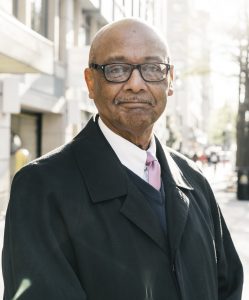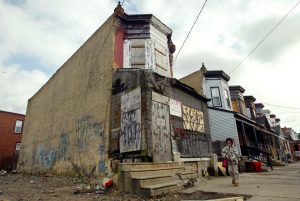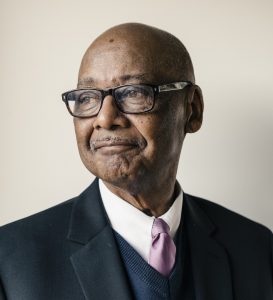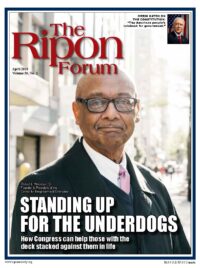
The facts are incontestable: After the expenditure of over $20 trillion in a 50-year “war on poverty,” the number of impoverished Americans has barely budged. The obvious failure of the strategy that has dominated our nation’s antipoverty agenda is testament to a critical need to reassess the fundamental assumptions that have guided policies and the qualifications of those who are considered “experts.”
Reform is vital – not only to stop the waste of what is now an annual expenditure of almost $1 trillion on an ineffective strategy, but, more importantly, for the sake of millions of Americans and generations of families who are spending years in demeaning dependency.
Misdiagnosing the Problem
First of all, the failure to develop an effective agenda is rooted in a misdiagnosis of the problem of poverty. Even among those who have the best intentions, policymakers on the Left and Right are deadlocked in debates about solutions, but are talking about entirely different cohorts of the poor.
All people are not poor for the same reason, and our remedies must be as diverse as the cohorts of the population in poverty. Through my experience with the Center for Neighborhood Enterprise and the nearly 3,000 community groups working in low-income neighborhoods that it has served, I have come to understand that there are four basic categories of the poor.
All people are not poor for the same reason, and our remedies must be as diverse as the cohorts of the population in poverty.
There is one cohort whose poverty is the result of an unexpected setback, such as the death of a breadwinner or a job loss. For these people, the welfare system can function as it was originally intended—providing temporary support until recipients can find their footing again. A second cohort is comprised of those who have remained dependent on the system because the disincentives to marriage and work that are embedded in its regulations make it a rational choice to avoid those stepping stones to self-sufficiency. In sum, they’ve “done the math” and realized it’s not worth the loss of benefits to take the first steps toward upward mobility. The third group is comprised of the disabled, who will always be in need of some support. The fourth cohort is made up of those who are in poverty because of the choices they make and the chances they take—for example, those who are living with the consequences of alcoholism and addiction.

It is not surprising that, with regard to those in category two, there has been no rush to reform a system that has trapped thousands in dependency or to promote their move toward self-sufficiency. The welfare system has swelled to comprise 80 different programs. States are rewarded for the numbers on its welfare rolls rather than those it has helped rise from dependency, and a bloated bureaucracy absorbs 70 cents of every dollar designated to address poverty. In short, poverty has become an industry and its commodity is the ranks of its dependents.
With regard to category four, giving no-strings attached aid to those whose poverty is due to the chances they take and the choice they make simply enables them to continue their self-destructive lifestyles—in essence, injuring with the helping hand. For this group, a fundamental revitalization in vision, character, and values is a prerequisite for them to reclaim their lives and escape from dependence. Until that is achieved, no amount of cash payments or benefits can engender a change in their circumstances.
The good news is that agents that can engender such fundamental transformation are even now at work in disadvantaged and devastated communities throughout the nation. That life- salvaging work is the forte of the hundreds of community leaders and grassroots neighborhood healers who I have had the privilege to know and support throughout the last 40 years.
Within-the-Box Mindset
On both the Left and the Right, those who have dominated the policy arena share one trait in common: They are locked in a “program” mentality that is averse to innovation and thinking “outside the box.” Debates amount to no more than tinkering within the system.
One side sees the ineffectiveness of the welfare system as evidence of the need to cut spending, while the other side uses stagnant poverty as proof that programs must be expanded. In sum, liberals believe the pathway out of poverty is lined with benefits, while conservatives think the poor can be starved into self-sufficiency. Meanwhile, the poor are trapped in a virtual laboratory maze in which, through material incentives or disincentives, the “cheese” is moved around to direct the path they take.
On both the Left and the Right, those who have dominated the policy arena share one trait in common: They are locked in a “program” mentality that is averse to innovation.
Nothing short of a paradigm shift is needed to develop an antipoverty agenda that can effectively move the poor to a pathway of upward mobility and an escape from dependence to self-sufficiency. And it is among those who suffer the most entrenched and debilitating poverty, the “category four” poor, where authentic reform of the nation’s antipoverty agenda will have the most powerful and striking impact.
Recognizing and Building on Capacity
To date, the anti-poverty agenda has been built on what I call “failure studies.” Typically, researchers go into low-income neighborhoods to tally the youths who have dropped out of school, births outside of marriage, and incidences of gang activity and crime. In contrast, my organization, the Center for Neighborhood Enterprise, goes into those communities to talk to the parents of families that are intact, the youths who have not been involved in substance abuse or crime, and the kids who have graduated from high-school to learn how they accomplished what they did in spite of the odds they faced.

We go into corner stores, barbershops, and beauty salons and ask the people who they would turn to in times of crisis. Invariably, they point to some person within the community that they can trust and rely on. (Government programs are deemed the resource of last resort.) These “healing agents” exhibit common characteristics. They share the same geographic and cultural zip-codes with the people they serve; they have a first-hand understanding of the challenges they face; and, they are available on a 24-7 basis and are committed for the long haul.
The testimonies of those who have been empowered to reclaim their lives through the work of these grassroots mentors are awe-inspiring. Men and women who had virtually lost their lives to drugs and alcohol have emerged as responsible employees, spouses, and parents. Fatherless youths who were raised on the streets and were drawn to the lures of gang violence and drug trafficking have become agents of peace and renewal in their communities. Men released from prison—with the mark of a felon and no prospects for a job—have risen to become successful businessmen and entrepreneurs who provide employment to others in the community.
These agents of change and renewal not only have the potential to make a substantive and sustainable impact on the most entrenched poverty in this country, but should be incorporated into the nation’s antipoverty agenda. As policymakers develop this agenda, I would suggest they keep the following five principles in mind:
1) People must be agents of change in their own transformation.
2) Those suffering a problem should be involved in the design and implementation of its solution.
3) For poverty rooted in self-destructive behavior, substantial and sustainable results entail a restoration of values and vision.
4) We must be willing to recognize a brand of “experts” who should be trusted and supported: Those whose authority comes not from diplomas and certificates on their walls, but from the testimonies of the men, women, and youths whose lives they have touched and changed.
5) The rules of the market economy should extend to our social economy. Social entrepreneurship should be rewarded on the basis of its outcome and impact – evidenced not by how many dependents are on the rolls, but how many have been empowered to rise from dependency.
Social entrepreneurship should be rewarded on the basis of its outcome and impact – evidenced not by how many dependents are on the rolls, but how many have been empowered to rise from dependency.
Congress could take one action immediately that would further all five of these principles by allowing taxpayers’ money to go directly to the sources of support in their community that they actively seek out rather than to their last resort, government programs.
To this end, some policymakers, including Speaker of the House Paul Ryan, have recommended that government anti-poverty funds be consolidated into one cluster and provided to the recipient in the form of a voucher that could be used for the resources of their choice. This vehicle would be administered by the state, and we have seen many cases in which state-level bureaucracies have proved to be as slow-moving and burdensome as the federal bureaucracy. While I believe this idea is an improvement over the current system, I do not believe it goes far enough in getting government out of the way.
A more finely targeted mechanism would be “Charitable Tax Credits” – a concept that garnered bipartisan support in the early ‘90s but was left to flounder. The average American has a tax liability between $300 and $500. If the government would permit these taxpayers a $50 to $100 tax credit for contributions to grassroots not-for-profit organizations that are operating within the same zip code as those experiencing the problems, millions of dollars would flow into these communities, making a substantial and sustainable difference in the lives of thousands of poor Americans.
Robert L. Woodson, Sr. is the Founder and President of the Center for Neighborhood Enterprise.




